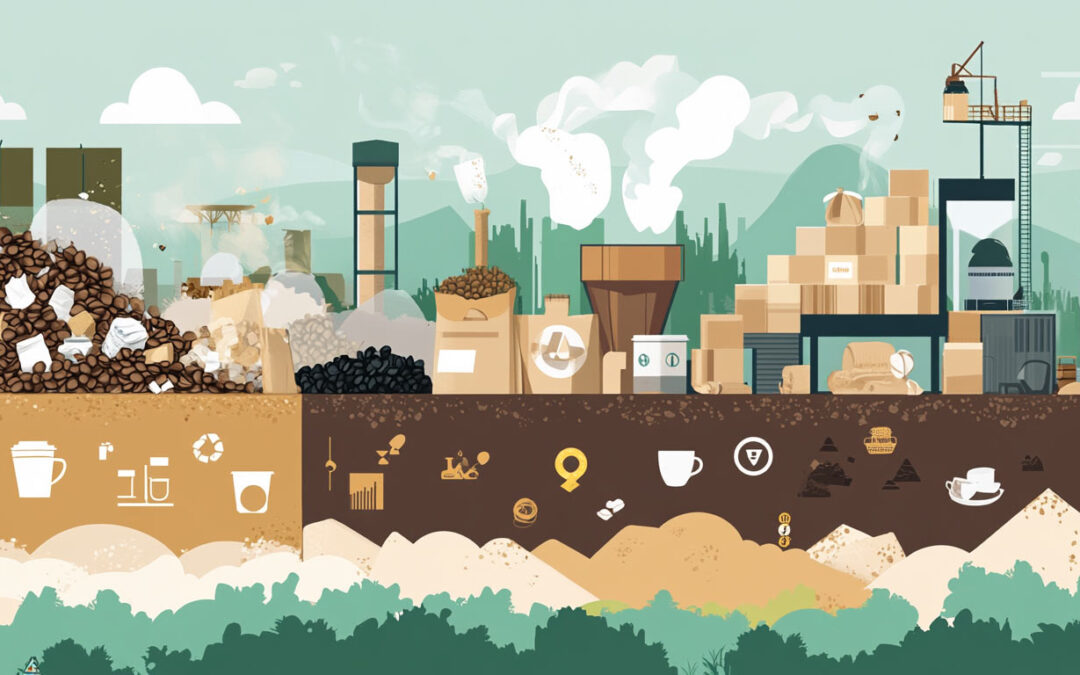Coffee packaging needs to protect freshness and resist moisture and light. That’s why most brands use multi-layered bags made of foil, plastic, and paper. The issue? These layers are fused together and can’t be separated by standard recycling processes. The result: most coffee bags end up as waste.
Why it Matters:
- Billions of bags are produced every year.
- Most go straight to landfills.
- The majority are not curbside recyclable.
- Plastic valves and degassing components add to the complexity.
Smarter Packaging Options for Coffee Brands
There’s no one-size-fits-all solution, but the options below show a wide spectrum of eco-friendly choices—some simple, some high-tech.
✅ Low-Impact, Easy Switches:
- Kraft paper bags: A minimalist option, ideal for local roasters and short-term storage. Biodegradable and compostable if unlined.
- Compostable liners: Adds protection without losing sustainability points.
- Recyclable labels and inks: Small but impactful tweaks.
♻️ Fully Sustainable Packaging:
- Mono-material bags: Made entirely from one recyclable plastic.
- Compostable film bags: Break down in industrial compost systems.
- Recyclable degassing valves: Newer valve tech now allows recycling, which used to be a big barrier.
Brand-Led Solutions: Raising the Bar
Some brands are going beyond packaging tweaks—they’re creating end-of-life systems for their packaging to actually get reused or transformed.
🌱 Savor Brands’ R+R® Upcycle Program
Savor Brands created a nationwide program that collects used coffee bags from customers and transforms them into usable products like building materials. It’s a closed-loop system with real-world results.
Here’s how it works:
- Customers return used packaging via drop-offs or mail.
- Materials are processed and shipped to partners for reuse.
- The result: zero-waste transformation.
🔧 Upcycling Partners That Make It Happen
Savor Brands works with two key upcycling companies to power the R+R® program:
- ByFusion: Turns non-recyclable plastic packaging into ByBlocks—modular construction blocks used in landscaping and building.
- HydroBlox: Uses recovered plastics to create permeable drainage systems used in civil engineering and green infrastructure projects.
These partners help turn old coffee bags into durable, valuable materials. It’s not just recycling—it’s reinvention.
How Coffee Brands Can Start Today
Want to start small or go all-in? Here are your moves:
Baby Steps:
- Switch to kraft or mono-material bags.
- Offer customers recycling tips on your packaging.
- Replace plastic valves with recyclable ones.
Big Moves:
- Launch a take-back program.
- Partner with upcycling companies like ByFusion or HydroBlox.
- Work with suppliers focused on sustainable packaging.
💡 Closing Brew: Don’t Just Roast It—Rework It
The world loves coffee. But loving coffee shouldn’t mean trashing the planet. Whether you’re a local roaster or a global brand, there are clear paths to better packaging. From simple kraft options to game-changing upcycling programs, every step counts.
Brands that take packaging seriously don’t just help the planet—they stand out to customers who car

